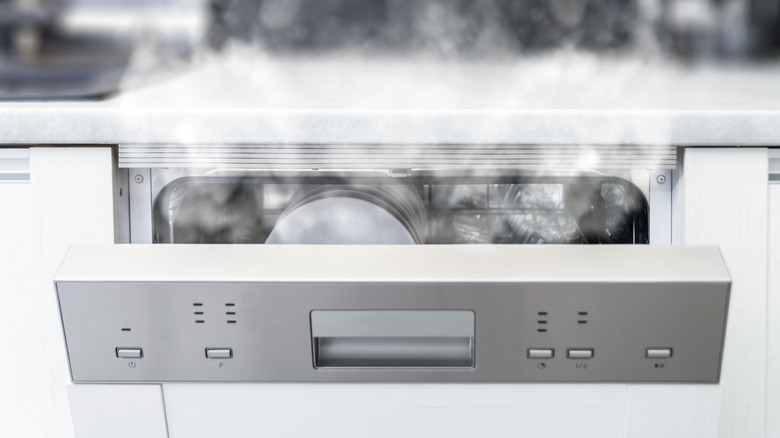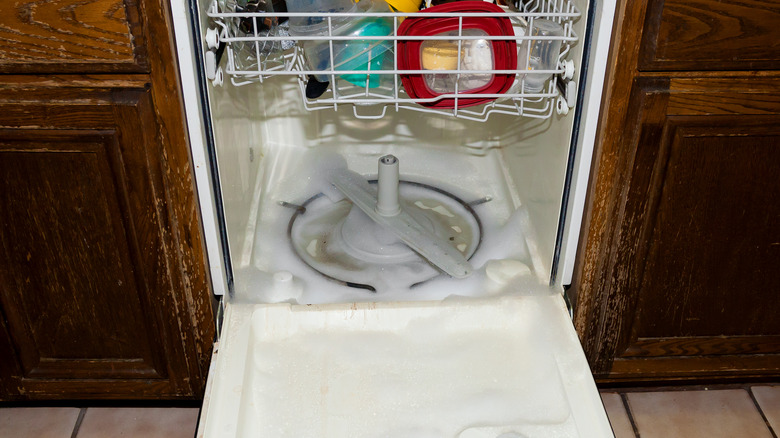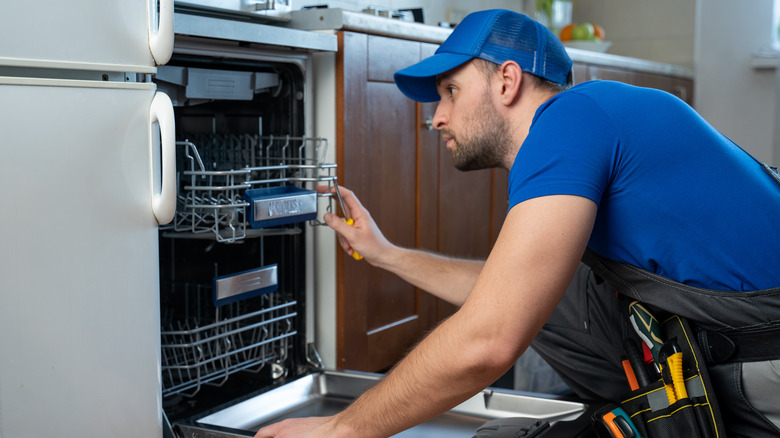Why It's Important To Locate Your Dishwasher's Heating Element
A dishwasher is often the unsung hero of busy households. It quietly does the dirty work day in and day out, asking nothing in return. Most homeowners give their dishwasher little thought until the day that it stops working. Then, almost immediately, dirty dishes pile up and busy schedules are disrupted by the need to hand wash and dry. Homeowners need these indispensable appliances repaired fast, and there are things that can help move that process along or limit the need for it altogether — like knowing where a dishwasher's heating element is located.
There are many reasons dishwashers stop effectively cleaning or drying dishes. It may be a clogged sprayer arm, improperly loaded dishes, or a dirty filter ... but a broken heating element is among the most frequent issues that can lead to a faulty dishwasher. If your dishes are still dirty or wet when the cycle has finished, or if it seems like your dishwasher never heated up during its cycle at all, a heating element may be to blame. So one of the first things you should do if your dishwasher is not working correctly is to look at this device and see if it's dirty, damaged, or disconnected.
Where is your dishwasher's heating element located?
Dishwashers work by filling the bottom few inches of the tub with water that is then heated by a ceramic-coated wire and sprayed (along with your dish soap) onto dishes through rotating sprayer arms. At the end of the cycle, the dirty water drains, and clean water is heated and sprayed to rinse the dishes. If you're familiar with electric ovens, dishwashers use a somewhat similar-looking heating element to heat the water, and this implement is probably responsible for the "heated dry" function on your machine as well.
To locate your heating element, open the dishwasher and pull out the bottom rack. Look on the bottom of the tub and you'll most likely see this conduit, which usually has two connections that run through the back or the base of the dishwasher and connect to electrical elements out of sight. You can help keep your heating element running smoothly on your own by watching for signs of hard water stains or limescale buildup and cleaning your dishwasher frequently, but if yours appears to be disconnected, loose, or damaged, it will probably need to be repaired by a professional.
Save money on dishwasher repairs
Home and device repair professionals have busy schedules and can be costly to hire. This is important to consider when deciding whether to repair or replace your appliance due to a broken heating element. According to Consumer Reports, if your dishwasher is more than about 5 years old, replacing it with a new model makes more financial sense. If it is a newly installed model, then repairing it is the better option.
To get the most bang for your buck, inform your appliance repair professional upfront that there is a problem with the dishwasher heating element; you can even check the manufacturer's website for more information about the part in question. Then, explain in detail what you see and the specific issues you're experiencing with your dishwasher.
This saves time and money because the professional may then be able to pre-order the correct replacement part and have it available when they arrive to complete repairs. Otherwise, they would potentially need to diagnose the issue on one visit, then order the part, then return to install it — increasing their billable service time as well as the time it takes to get your dishwasher back in running order. But if you have already located your dishwasher heating element and even discovered for yourself what may be amiss, you'll have a head start on avoiding an extremely high dishwasher repair cost or weeks of handwashing.


